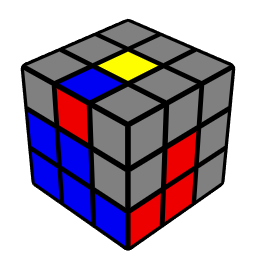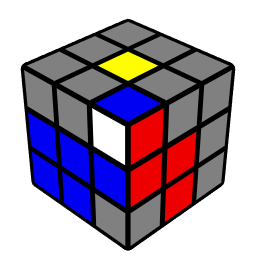Keyhole Technique
Use empty F2L slots to solve pieces more efficiently
What is Keyhole?
If you're reading this, you should be comfortable with solving F2L pairs by first inserting the corner then the edge, before moving on to the next pair. Keyhole is a powerful technique that can save you significant moves when you have an empty F2L slot available.
When to Use Keyhole
- You have a corner or an edge solved
- You have another empty F2L slot available
When Not to Use Keyhole
- You have no empty slots/You are solving the last pair
Interactive Demonstration
Click on images or algorithms below to see the moves in action!
Keyhole for Edges

The Situation
We want to solve this edge, but the normal algorithm would take 9 moves. Notice the empty slot in the back right!
The Solution
Instead of the long algorithm, we can use the empty slot:
D' R U' R' D
5 moves
D' moves the empty slot to front right, R U' R' inserts the edge, D realigns the bottom layer.
Keyhole for Corners

The Situation
We want to solve this corner. The normal way would take 12+ moves. Again, we have an empty slot available!
Two Solutions
With wide moves:
u R U' R' u'
5 moves
Without wide moves:
D R U' R' D'
5 moves
Practice Tips
Recognition
- Check for solved pieces then empty slots
- Consider keyhole before other algorithms
Practice
- Practice without timer to understand the concept fully
- Create keyhole situations deliberately by solving one edge or one corner
- Practice both edge and corner variants
- Practice with any empty slot and with different insertions
Ready to Master F2L and CFOP?
Keyhole is a great technique that is used by pros, and it's also a great way to start learning F2L.